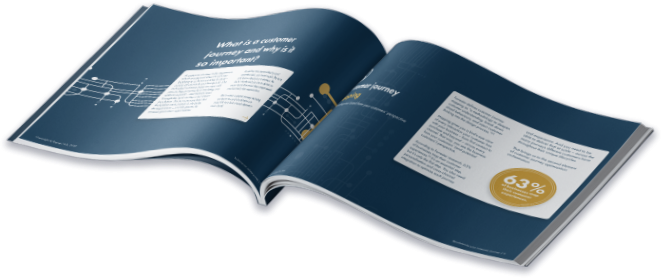In our multi-channel world, customer journeys aren’t linear. They’re not pre-planned either, with people spontaneously choosing touchpoints based on what’s convenient at any given moment.
This presents opportunities and challenges for businesses. The opportunities comes from the ability to offer more personalisation, which fosters relationships and loyalty. The challenges come in offering a high standard of service across those complex journeys – and in managing vast quantities of siloed data to enable that high standard.
Was an abandoned shopping cart due to a previous bad experience, lack of information, mobile usability issues or payment choices? Was the new credit card application due to email marketing, an AI-powered chatbot or a helpful call centre agent?
It can be difficult to answer questions like these.
Overcome data challenges with customer journey tracking
Data synthesis is the Achilles heel for most customer experience (CX) functions. Many systems can put a tag on a campaign URL, offer self-service IVR options or create an automated customer service workflow. But extracting value from this disparate data is far more complicated than that, because:
- Generally, you can only analyse data retrospectively
- Data is spread across different systems, so you can’t easily follow each step of a journey
- It’s hard to draw conclusions about cause and effect
To eliminate these data-related challenges, you need the ability to track customer journeys in real time – and access a central source of all related data. Here’s how to do that.
1. Map customer journeys
Forrester defines customer journey mapping as “a methodology to deepen customer understanding, break down siloed behaviours, and inject customer thinking into the design process.”
Mapping gives you a bird’s-eye view of every interaction your customer has with your business – from first contact to purchase and beyond – across every channel. That way, you see the business from your customers’ (and potential customers’) perspective.
Start by dividing journeys into stages, such as awareness, consideration, purchase, retention and advocacy. Consider the common touchpoints for each. Don’t worry about all the little variations and different routes, just look at what a standard journey is from start to finish.
This gives you a basis for considering how effective current systems are. For example, are customers acquired through organic search more likely to become advocates for your brand than customers acquired through social media advertising? Workshopping questions like this will help you decide how to prioritise your initial journey optimisation efforts.
2. Coordinate and automate the ideal journeys
Customer journey mapping gives you initial visibility. Journey orchestration gives you a single source of accurate data from all systems, so you can confidently coordinate and automate touchpoints. There are 2 aspects to this:
- Unifying CX data – with technology that sits on top of your systems (e.g. marketing, purchasing, logistics, call centre)
- Automating interactions – so you can keep customers on the most efficient journey based on their goals
With journey orchestration, you can use automation to personalise at scale, leveraging technology like AI to create a joined-up experience across touchpoints. You can therefore pre-empt issues and re-engage people who drop off the expected journey, making it easier to deliver higher customer value and satisfaction efficiently.
You can also analyse all CX data to draw those vital cause-and-effect conclusions, enabling you to identify problems and gaps – and rectify them.
3. Analyse and optimise journeys in real-time
Mapping gives you the strategic underpinning, and orchestration gives you the insight, automation and scalability. Visualisation gives you a real-time view of how journeys are unfolding, so you can identify successes and eliminate bottlenecks.
Engage Hub’s Customer Journey Tracker visualises the sequence of interactions in real time. You can therefore analyse which touchpoints and channels are working most effectively – and where there are bottlenecks. This empowers you to make evidence-based decisions on how to streamline the customer experience, so you can maximise return on your investment – in terms of both revenue generation and customer satisfaction.
Download our latest whitepaper for more insights on the importance of journey orchestration. What to see Customer Journey Tracker in action? Get in touch to book a demo.




